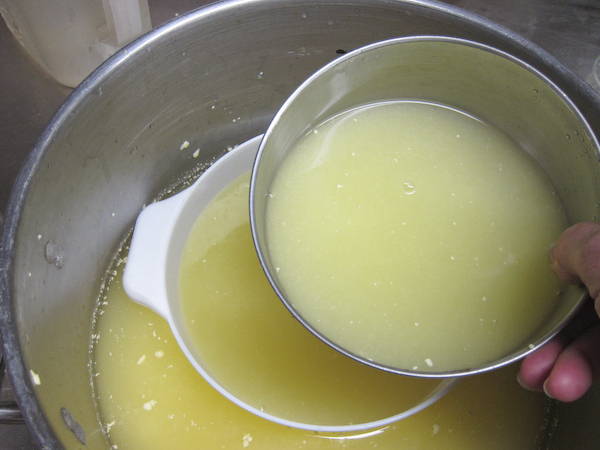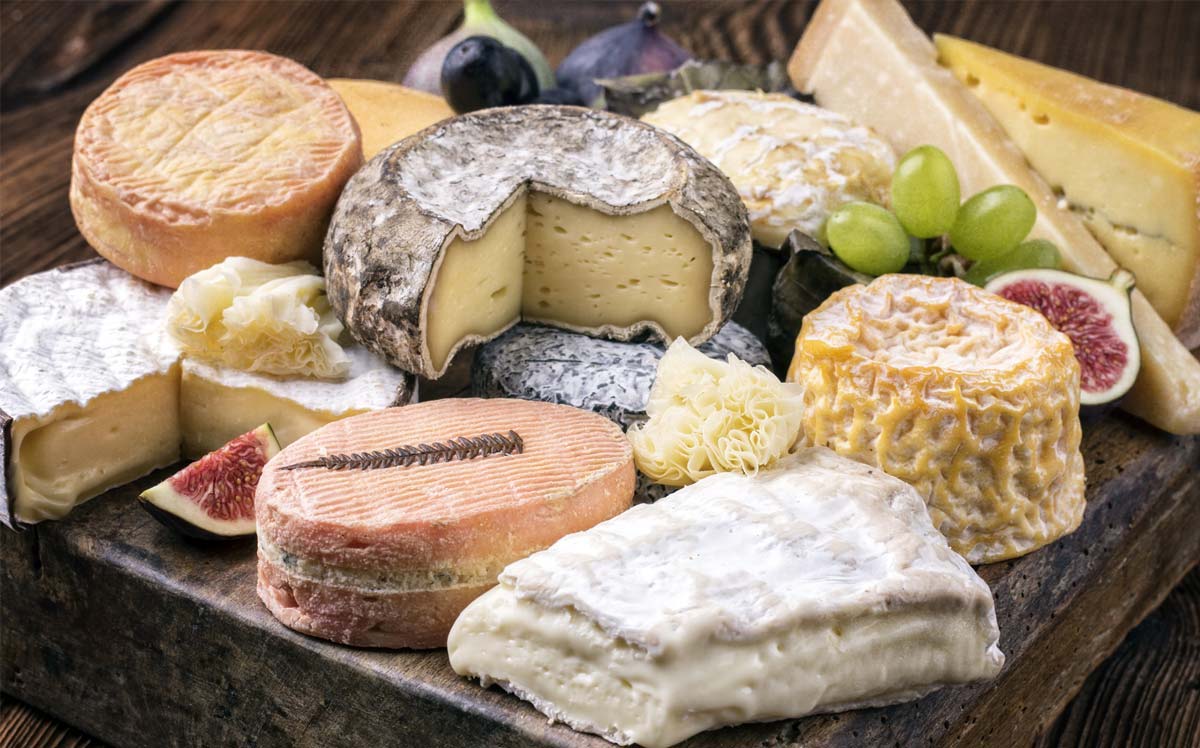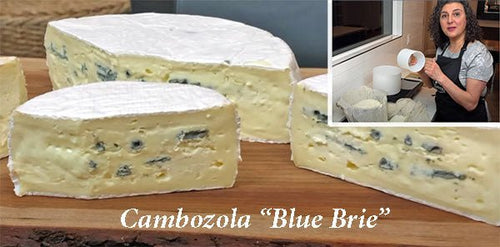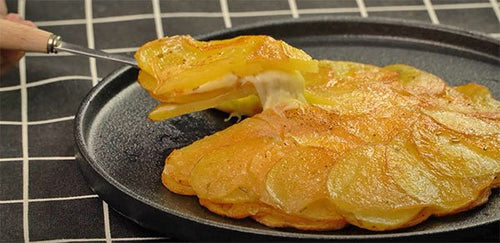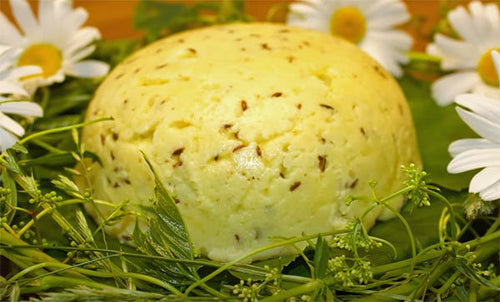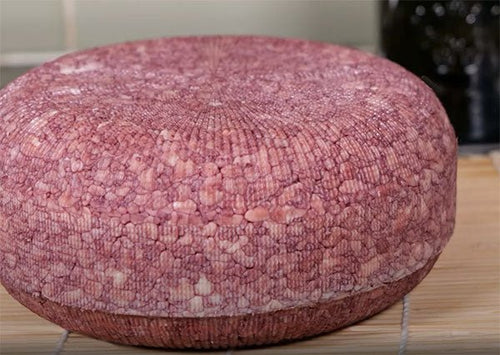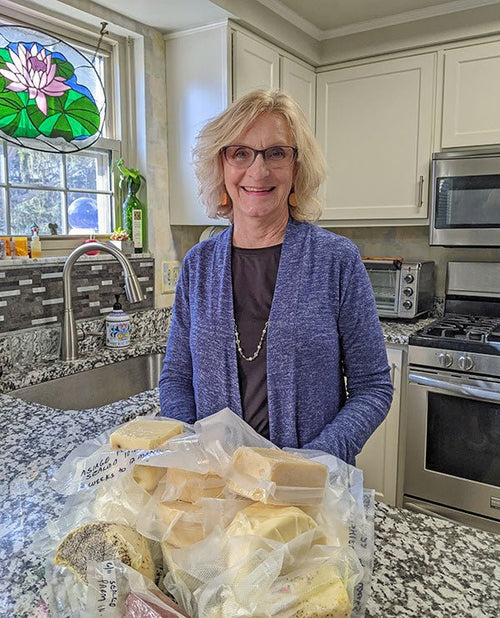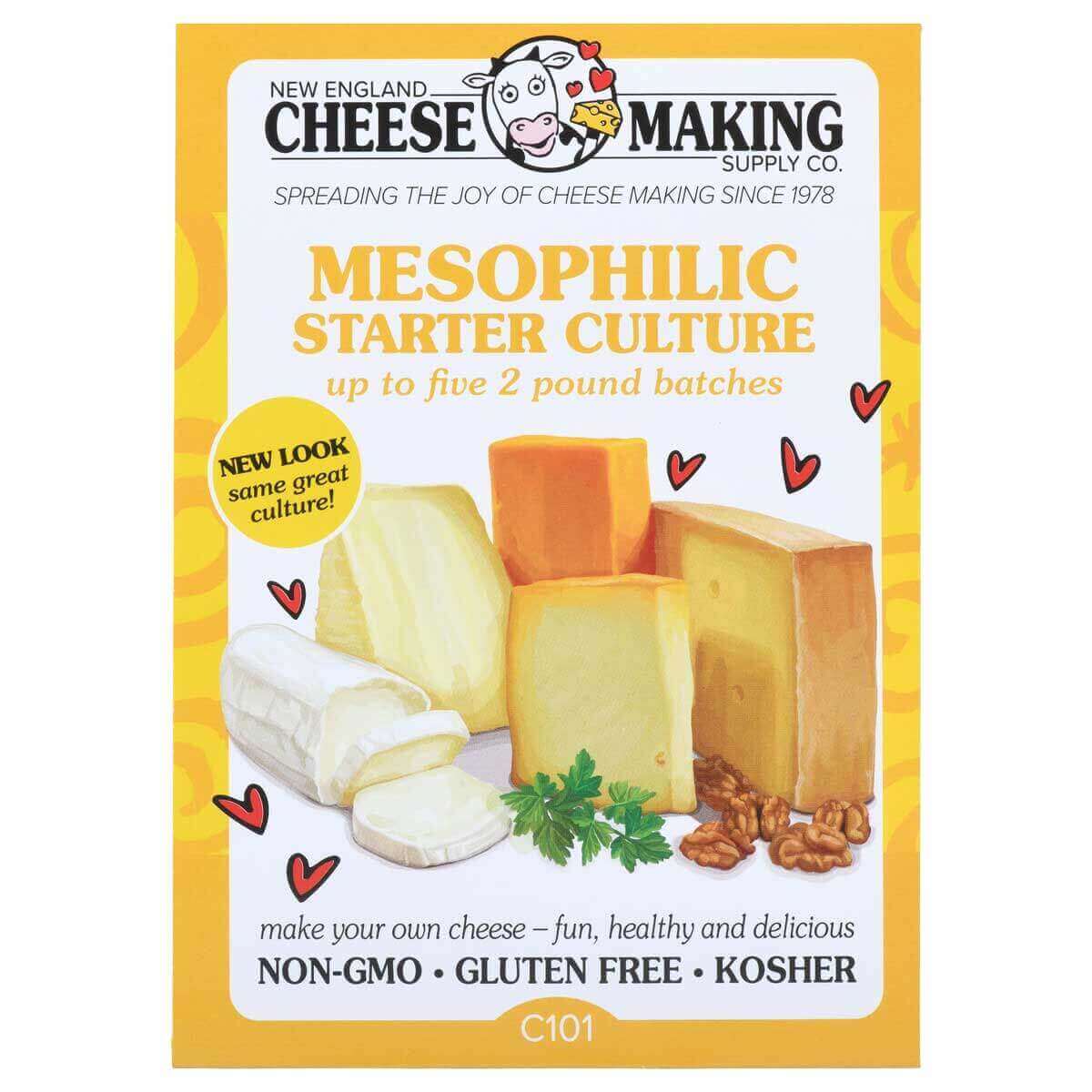Learn About Whey
So Much Whey
You try to buy the best milk you can for cheese making and when you're done you have a couple of pounds of great cheese, but what about all of that whey that's left over?
Why is there so much and what can you do with it? Here are a few simple things that a home or farmstead cheese maker can do with whey.
Where Does Whey Come From
If you have been making cheese for any amount of time, you probably already know that whey is essentially the water you are trying to remove from the curds in order to make cheese.
Lets first talk about milk used for cheese making and its components.
-
Protein (Casein) is one of the components you should be focused on for the main cheese body.
This will initially form the curds you need to start with, but there are protein components that do run off with the whey (whey proteins = ricotta). - Calcium is the glue that holds the proteins together. Some of this remains in your cheese and some of it runs into the whey. This all depends on the process and cheese you are making.
- Lactose is the milk sugar that should be converted to lactic acid by the bacteria. This is how you keep your cheese from becoming compost. Some of this will always run off in the whey. This is the food for the bacteria cultures to live on.
- Fat is the yummy part that gives your cheese that full flavor and silky texture you love so much. You want to keep as much in the cheese as you can but no matter how hard you try some will run off with the whey.
- Water...lots and lots of water, much of which runs off as whey when you drain the curds. Again, this all depends on your process and the cheese you are making. Milk is normally 85-90% water.
- Bacteria are involved in consuming the lactose and converting it into lactic acid. These can either come naturally in raw milk (very diverse bunch) or those added to pasteurized milk (a more selective crew). Most are trapped within the curd, but enough escape with the whey drainage to continue fermentation of the whey if kept warm.
- Minerals and Enzymes are also found in milk and these will support the bacteria, as well as take part in the protein and fat transitions which make a ripened cheese what it should be.
Now, if you have made it through the list above and noted how many times the word whey occurs, it should be quite obvious that when you make cheese and drain the whey, you not only get rid of the water portion of milk, but a lot of the good essential components as well.
It logically follows then that the whey also contains some pretty good things and perhaps should not be dumped down the drain!
What is Whey
The take-away from the previous section is that whey is mostly water, with varying quantities of all of the goodies that milk has to offer, leaching into it as the curds drain. The amounts of each component will depend on the type of cheese you are making and the process to get there.
In a typical run of milk to cheddar cheese:
- 95% of the water goes into whey
- 96% of the lactose ends up in the whey
- 4% of the Casein (cheese protein) is drained and the rest becomes curd/cheese
- 93% of the WHEY proteins are in the whey
- 50% of the salts and minerals are also lost to the whey
Depending on the process, you will eventually have the solid curd phase and a LOT of whey when finished. We have found that many folks do just pour this down the drain, but if the whey is still SWEET, you are missing out on the RICOTTA that can be made in addition to your batch of cheese. Even if the WHEY is ACID, it can have a lot of benefits.
Most first time cheese makers find the amount of whey to be a bit of a surprise if they have not been forewarned of this.
The volume will vary substantially with the type of cheese being made and the process used as well, as the milk being used. A dry long aged cheese will release more whey than a soft fresh or early ripened cheese.
Not Down the Drain
Some cautions on why it is not good to pour whey down the drain.
If you simply pour the whey down the drain you will lose out on some good milk components, but even more important you are creating a negative impact for the environment.
As you can see above from the whey components, a lot of milk sugars go into the water supply and this milk sugar can be a BIG problem for septic systems and sewage disposal systems, as well as the entire watershed. The lactose will be consumed by bacteria, changing the acidity and altering life in the stream.
Plus, the nutrients included in the whey disposal will increase the biological activity and can increase the 'BOD' (Biological Oxygen Demand) significantly. In large commercial operations, this can be serious enough to strip the oxygen for other animals creating serious die-off or dead watersheds.
This is why it is illegal for large corporations to dump whey into the system without treating it first for these issues.
All Whey is Not the Same
After reading this far, you have probably already answered NO and, of course, you are right.
It all depends on the cheese you make and your milk. By now you know the component mix and amount of whey will vary substantially.
One of the most substantial difference in whey and how it is used will be the amount of acid in the final whey.
Your whey can be considered either a sweet or acid whey.
This will essentially depend on:
- how much lactose has been converted to lactic acid by bacteria
- how much citric acid, vinegar, or other acidifier has been added to the milk.
Furthermore, you will need to know whether you have a sweet or acid whey before deciding on what to do with your whey.
Sweet Whey
Sweet Whey will be exactly that, a whey that has been drained from the curd before the bacteria has had a chance to change a lot of the sweet lactose to lactic acid.
Whey drained early in the process, such as in Cheddar, Gouda, Parma, or an Alpine style cheese would be a good example.
A normal sweet milk (pH 6.7) made into a cheese such as cheddar may develop a pH 6.3-6.4 before the whey is drained, but other sweet whey can develop acid as low as pH of 5.1-5.2.
This sweet whey can easily be used for making Ricotta. The sweeter whey will produce a richer cheese, but the lower pH whey would give a higher yield.
This can be quite plant friendly as well, if given to plants in your garden, since it includes a lot of nutrients and food value.
However, do not allow this whey to sit very long after drainingfrom the curds, because the bacteria will still be working on the lactose that carries over from the curds, and the whey will eventually become much more acid.
Traditionally, cheese makers considered whey a waste product and looked for the most economical way to dispose of it.
Generally, they discarded it in one of three ways:
- Discharged into Waterways - Very, Very bad for the environment
- Sprayed onto Farmland - A reasonable solution but limited to acreage available.
- Sold for a Low Return as Animal Feed - A good re-use that Parma Pigs have loved for centuries.
Sweet whey disposal is not as big a problem as acid whey because it has many commercial uses, mostly because it has more protein and is less acidic than Greek yogurt or acid whey.
Because of this, cheese companies can sell sweet whey as a protein supplement or food ingredient. But they can't do that with acid whey.
Sweet whey nutritional components proved so profitable that producers began manufacturing cheese just to sell the whey as a food supplement.
Acid Whey
An acid whey will be drawn from a curd that has had a longer time for the bacteria to work, or enough of an acidifier has been added, such as citric acid or vinegar.
This will include whey from making chevre, sour cream, drained yogurt, etc.
Any whey with a pH below 5.1 is classified as an acid whey.
Acid whey can also have a much greater percentage of calcium because as the lactose is converted to lactic acid, calcium is released into the whey and runs off with it. Much of this would normally be bound with the proteins in a cheese that produced a less acid whey.
Because of the increased popularity of Drained or Greek Yogurt, the disposal of the acid whey produced has become a serious problem for some communities. The Northeast produced more than 150 million gallons of acid whey last year alone.
For every three or four ounces of milk, ... companies can produce only one ounce of creamy Greek yogurt. The rest becomes acid whey. Its a thin, runny waste product that can't simply be dumped. Not only would that be illegal, but whey decomposition is toxic to the natural environment, robbing oxygen from streams and rivers. That could turn a waterway into what one expert calls a “dead sea,” destroying aquatic life over potentially large areas. Spills of cheese whey, a cousin of Greek yogurt whey, have killed tens of thousands of fish around the country in recent years."
Excerpt from the modern Farmer article
Ways to Use Whey
Cheese Making Recipes
Hot whey instead of hot water used in the final heating for stretching Mozzarella cheese
Whey used in the final step for cheese such as Italian Basket Cheese
Halloumi requires a long cook in boiling whey
Ricotta from Sweet Whey
Whenever I have the sweet whey and the time to process it into Ricotta, this is always my first choice. It is the whey proteins that form this cheese and they would normally be lost if you simply threw the 'whey away' (There! I managed to say that at least once in this whey story). The sweeter the whey, the richer the flavor of the Ricotta, so do not wait very long to make this after draining the whey. The addition of a bit of cream to the whey will enhance the flavor. All of the details for making Ricotta can be found in our Ricotta Recipe.
Gjetost or Mysost
This is a classic whey cheese from Scandinavia. Gjetost is made from goats milk and Mysost is made from Cows milk.
Essentially the process involves taking fresh sweet whey (preferably from a hard cheese) and then cooking it down over a period of several hours. Cream can be added at the mid-point of cooking and the whole mass requires a lot of stirring. How much cream you add will determine the final consistency as well as how much moisture you remove.
The final cheese will be sweet (from concentrating the lactose), salty (from concentrating the natural milk salts), and either spreadable or sliceable depending on how much moisture you remove in the cooking process. The longer you cook this, the more caramelizing you will taste in the finished cheese. Your end result will probably be about 7-15% of your original whey volume.
The only downside to this use of whey is the amount of energy used to remove the moisture and the amount of stirring that it requires throughout the process.
For more info on this, Ricki has a very detailed recipe in her book on page 150-151 as well as in our blog with contributions from several of our cheese fans.
Butter From Sweet Whey Cream
Cream will rise to the top of the whey if left to sit still for a few hours or even overnight, if kept cool. The result is a nice layer of cream that can be easily skimmed from the whey for butter making.
If this was allowed to sit and ripen for a little while, it can easily be made into sour cream or better yet Cultured Butter.
The process is quite simple and is well detailed on our Butter Recipe online.
Acid Whey is not good for this because the cream has become too acid for making
Growing Tomatoes
If nothing else, I take the whey to my garden. The plants just love the nutrients and I am sure that a lot of what is living in the soil loves it just as much. I tend to do this only with sweet whey though, and tend to do it sparingly to my more fragile plants such as peppers. I dilute the whey with water 1:1 for my lettuce. For more sensitive plants, use 10% whey with water but for acid loving plants use 50% whey with water.
I have used 100% on Tomatoes but this will destroy lettuce and acid sensitive plants. You can also use drained yogurt whey (high acid should be used with more caution)
My Tomatoes seem to like this best and often grow to my height and more (For those that don't know me, I am 6'7").
Do not apply whey to gardens before seeds have sprouted. Doing so may deter germination.
For indoor plants, keep your whey refrigerated or frozen until use.
When freezing pour it into ice trays and then add one whey cube to each houseplant.
Acid Whey is a good amendment for soils that are too alkaline. Whey provides phosphorus and potassium, and contains simple organic compounds, making it easy for plants to take in.
In the non-garden and winter season the whey just goes to the compost to claim the nutrients.
Whey in Soups & Stocks
Mineral rich whey can also be used instead of water for soups and stocks as well as for cooking pasta. This is much healthier than using plain water and your soups and pasta gets some extra flavor as well. We even have a few soup recipes with whey on our blog.
Also, at the last mixing of the curds 1 tsp. salt can be added for flavor and to encourage the final whey release.
Whey for Baking
Many find that using whey instead of water for baking can create a nice texture in the finished product. Also it can be great in adding to your pancake batter for big fluffy pancakes.
Whey For Farm Animals
For centuries cheese makers have fed their leftover whey to their pigs. Most notably the whey from Parma Cheese goes to the pigs that make up Parma Ham . I often see pigs near the cheese room when I visit cheese makers in the mountains. They really love the whey mixed with their grain. Oink_Oink_Squeal! says the piggy.
Also, cows love it as well as the pet dog, but keep the amounts moderate because Fido just doesn't seem to know when he has had enough.
I would stay with Sweet whey for the animal feeding though. The acid whey in any large amounts may not be such a happy outcome.






























